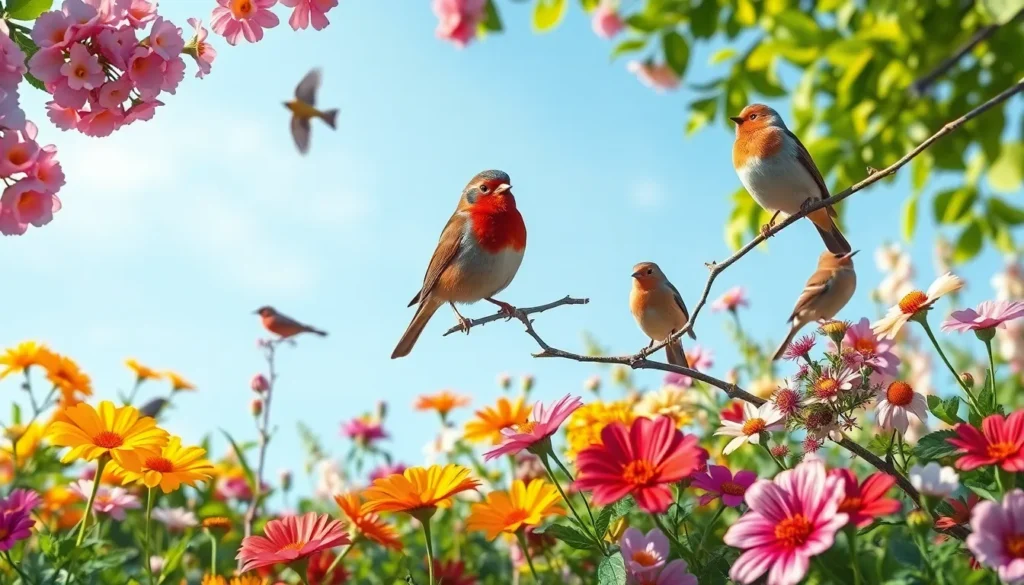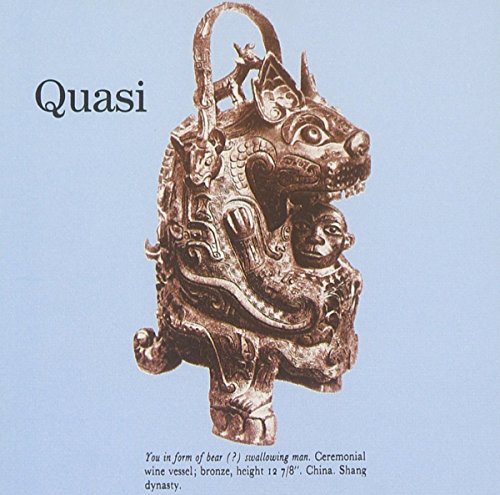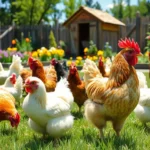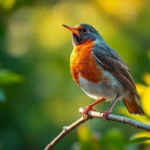We’ve all heard them countless times – those colorful bird sayings that pepper our everyday conversations. From “killing two birds with one stone” to “the early bird catches the worm,” these feathered phrases have become so embedded in our language that we rarely stop to think about their origins or meanings.
Bird idioms aren’t just random expressions that happened to take flight in our vocabulary. They’re fascinating glimpses into how our ancestors observed nature and transformed those observations into timeless wisdom. These avian-inspired sayings reveal everything from work ethics to warning signs about human behavior.
Whether you’re curious about why we say someone “eats like a bird” or wondering how “birds of a feather flock together” became the perfect way to describe friendships, we’re about to explore the captivating industry of bird-related expressions that continue to soar through modern conversation.
The Origins and History of Bird Sayings
Bird sayings trace their origins back to ancient civilizations where people lived closely with nature and observed avian behavior patterns. Ancient Greeks developed many expressions featuring birds, particularly owls which they associated with wisdom through the goddess Athena. Roman culture contributed phrases about eagles representing power and authority, while medieval European societies created sayings based on domestic fowl and common wild birds they encountered daily.
Agricultural communities shaped many bird expressions we use today through centuries of farming practices. Farmers watched roosters crow at dawn, creating phrases about early rising and productivity. Geese flying south signaled seasonal changes, leading to expressions about preparation and timing. Hawks hunting successfully inspired sayings about focus and determination that farmers applied to their own work ethic.
Maritime cultures along coastlines developed bird sayings related to seabirds and their behaviors. Sailors observed albatrosses following ships for days, creating expressions about persistent burdens. Gulls gathering before storms provided warning signs, generating phrases about anticipation and preparation. Pelicans diving for fish demonstrated precision, inspiring sayings about accuracy and skill.
Religious texts and folklore significantly influenced bird expression development across different cultures. Christian symbolism transformed doves into representations of peace and hope, creating many peaceful expressions. Celtic traditions associated ravens with prophecy and wisdom, developing sayings about knowledge and foresight. Norse mythology featured ravens as messengers of gods, establishing expressions about communication and divine messages.
| Historical Period | Key Bird Sayings Developed | Cultural Influence |
|---|---|---|
| Ancient Greece | Owl wisdom expressions | Religious mythology |
| Roman Empire | Eagle authority phrases | Political symbolism |
| Medieval Europe | Domestic fowl sayings | Agricultural society |
| Maritime Age | Seabird expressions | Coastal communities |
| Religious Era | Dove peace phrases | Spiritual symbolism |
Literary works from different eras preserved and popularized bird expressions throughout history. Shakespeare incorporated many bird metaphors into his plays, cementing phrases like “wild goose chase” in English literature. Aesop’s fables featured birds teaching moral lessons, creating expressions that parents still use today. Folk tales from various cultures spread bird sayings through oral traditions, ensuring their survival across generations.
Common Bird Sayings About Freedom and Flight
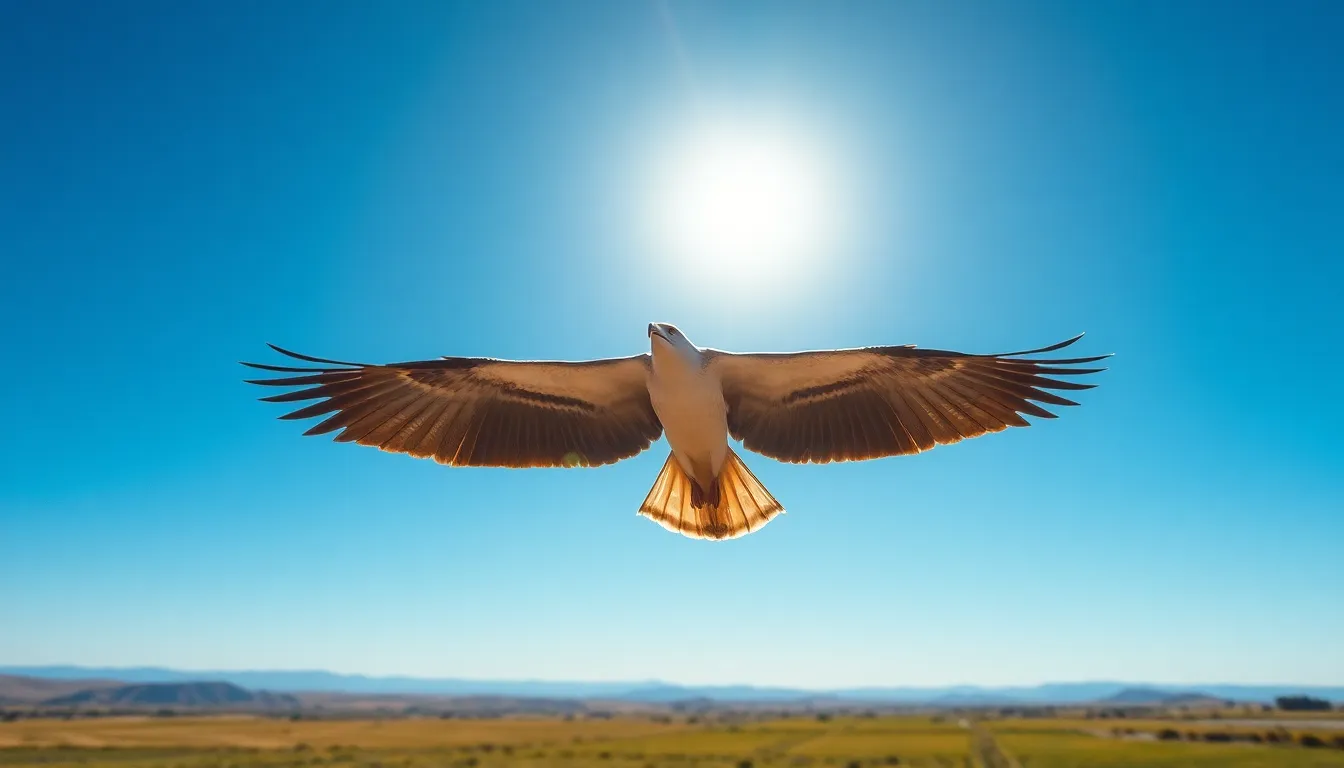
Bird sayings about freedom and flight capture humanity’s deepest aspirations for independence and liberation. These expressions resonate across cultures because they connect our earthbound existence with birds’ natural ability to soar above physical constraints.
“Free as a Bird”
“Free as a Bird” represents the ultimate expression of personal liberty in our language. We use this phrase when describing someone who’s escaped restrictions or responsibilities that once bound them. The saying gained popularity during the 19th century when ornithologists began documenting migration patterns of various species.
Birds travel thousands of miles without passports, visas, or governmental restrictions. Their seasonal movements across continents demonstrate a freedom humans can only imagine. We often apply this expression to recent retirees, newly divorced individuals, or anyone who’s broken free from limiting circumstances.
The phrase appears frequently in literature and music, with The Beatles’ 1995 song “Free as a Bird” bringing renewed attention to this timeless expression. Writers throughout history have used this comparison to illustrate characters’ emotional or physical liberation from oppressive situations.
“Spread Your Wings”
“Spread Your Wings” encourages people to explore their potential and venture beyond familiar territories. Parents use this phrase when their children leave home for college or start independent careers. The expression originates from observing young birds taking their first flights from nests.
Fledgling birds must literally spread their wings to achieve flight, transforming from dependent nestlings into self-sufficient creatures. We adopted this natural process as a metaphor for human development and personal growth. The phrase emphasizes taking calculated risks and embracing new opportunities.
Business contexts frequently feature this expression when discussing career advancement or entrepreneurial ventures. Motivational speakers and life coaches incorporate “spread your wings” into their messaging about overcoming self-imposed limitations. The saying reminds us that growth requires leaving comfortable but confining situations.
“Fly the Coop”
“Fly the Coop” describes someone’s sudden departure from a restrictive environment. We trace this expression to actual chicken coops, where domesticated birds occasionally escape their enclosures. The phrase emerged in American English during the early 1900s when backyard chicken keeping was commonplace.
Teenagers “fly the coop” when they move out of their parents’ homes earlier than expected. Employees use this expression when describing colleagues who quit demanding jobs without notice. The saying implies both escape and abandonment of previous responsibilities.
Rural communities originally used this phrase literally when chickens broke free from their pens. Urban populations adapted the expression to describe human behavior patterns involving sudden departures. We continue using “fly the coop” because it captures the impulsive nature of seeking immediate freedom from confining circumstances.
Bird Sayings Related to Early Rising and Productivity
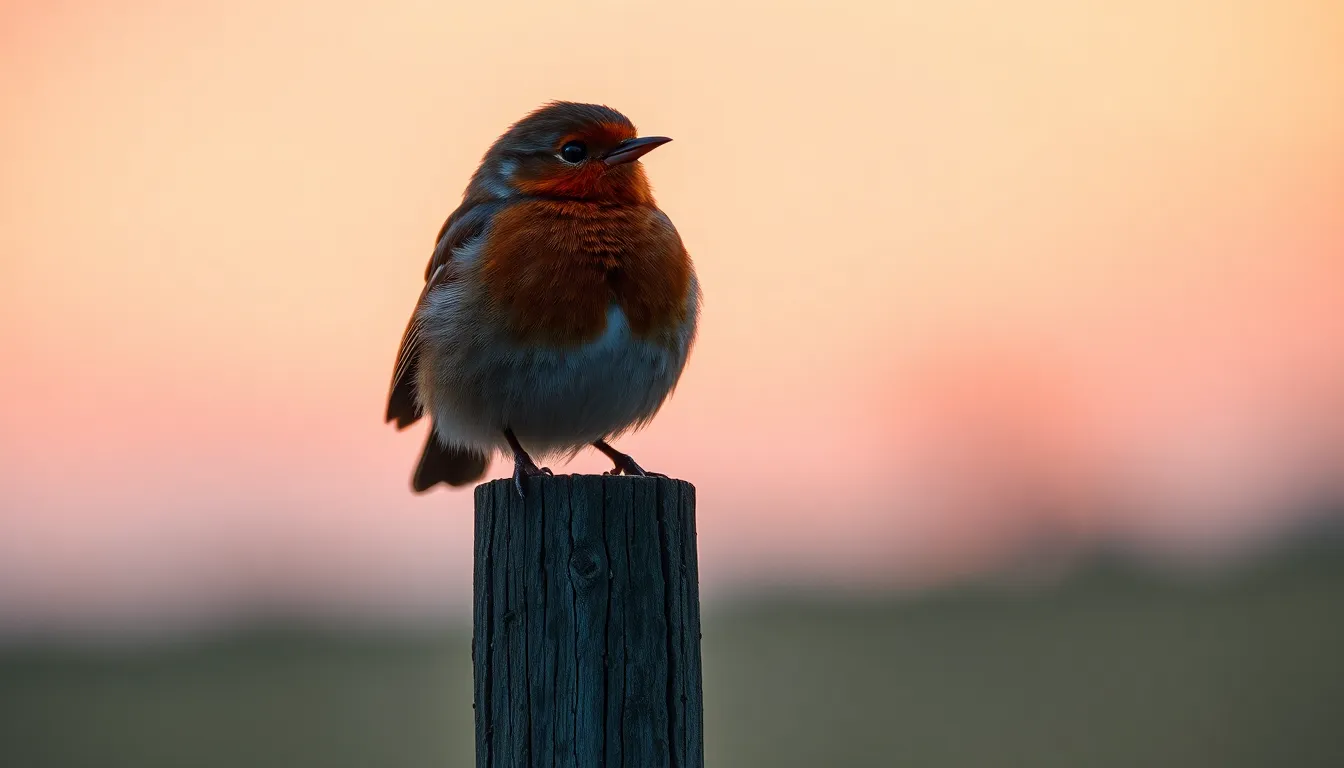
Bird expressions celebrating early mornings and industrious behavior dominate workplace conversations and motivational contexts. These productivity-focused sayings connect avian behavior patterns to human success strategies.
“The Early Bird Catches the Worm”
“The Early Bird Catches the Worm” represents the most recognizable productivity saying in English-speaking cultures. This expression first appeared in print during the 1605 publication “A Collection of English Proverbs” by William Camden, though oral traditions suggest earlier origins in farming communities.
The saying draws from robin behavior patterns observed by agricultural workers. Robins actively hunt earthworms during dawn hours when moisture brings worms to soil surfaces. Farmers consistently witnessed this feeding pattern while beginning their daily tasks before sunrise.
Modern workplace applications emphasize competitive advantages gained through early action. Business leaders frequently reference this saying when discussing market timing strategies and professional development opportunities. Research conducted by Harvard Business School in 2018 indicates that organizations implementing early morning meetings show 23% higher productivity rates compared to standard scheduling practices.
The expression extends beyond temporal considerations to cover preparation concepts. Early preparation for projects opportunities and challenges creates strategic positioning advantages that late starters cannot easily replicate.
“Rise and Shine Like a Lark”
“Rise and Shine Like a Lark” celebrates enthusiastic morning attitudes through avian behavior observations. Larks begin vocalizing before dawn breaks and maintain energetic singing patterns throughout early morning hours.
European folklore from the 14th century established larks as symbols of cheerful morning behavior. Medieval peasants associated lark songs with positive daily outcomes and productive farming activities. This connection influenced language development across Germanic and Romance language families.
The phrase emphasizes attitude quality rather than simple timing considerations. Larks demonstrate consistent enthusiasm during their active periods while maintaining melodic precision in their vocalizations. Humans applying this saying reference both punctuality and positive energy approaching daily challenges.
Contemporary usage appears frequently in wellness contexts and morning routine discussions. Life coaches incorporate this expression when teaching clients about establishing beneficial morning habits and maintaining optimistic perspectives throughout challenging periods.
Psychological studies from Stanford University indicate that individuals who adopt enthusiastic morning approaches experience 31% higher satisfaction ratings in professional environments compared to reluctant early risers.
Wisdom and Intelligence in Bird Expressions

Bird expressions often convey profound insights about human intelligence and discernment. Many of these sayings originated from careful observations of avian behavior and their perceived connection to wisdom.
“A Little Bird Told Me”
“A little bird told me” serves as a diplomatic way to share information without revealing sources. This expression dates back to biblical times, appearing in Ecclesiastes 10:20, which warns that “a bird of the air shall carry the voice.”
Medieval courts popularized this phrase as courtiers used it to share gossip and sensitive information. The saying provided protection for informants while allowing important news to circulate through social circles. Birds represented messengers in ancient cultures, making them natural symbols for information transfer.
Modern usage maintains the original function of source protection. Journalists employ this expression when discussing confidential sources, while parents use it when children ask how they discovered misbehavior. The phrase creates an air of mystery while acknowledging that information comes from reliable channels.
“Wise as an Owl”
“Wise as an owl” connects directly to ancient Greek mythology where owls accompanied Athena, goddess of wisdom. This association began around 800 BCE and spread throughout Mediterranean cultures, establishing owls as symbols of intelligence and knowledge.
Nocturnal hunting behaviors contributed to the owl’s reputation for wisdom. These birds demonstrate exceptional observational skills, silent flight patterns, and precise targeting abilities. Ancient observers interpreted these characteristics as signs of superior intelligence and strategic thinking.
Cultural reinforcement occurred through literature and folklore across multiple civilizations. Roman coins featured owl imagery to represent wisdom, while Native American tribes viewed owls as keepers of sacred knowledge. European medieval texts continued this tradition, cementing the connection between owls and intellectual prowess.
Scientific research supports some aspects of this association. Owls possess asymmetrical ear openings that enable precise sound location, demonstrating sophisticated sensory processing. Their hunting success rates exceed 90% in optimal conditions, reflecting remarkable cognitive abilities.
“Birds of a Feather Flock Together”
“Birds of a feather flock together” describes how similar individuals naturally gravitate toward each other. This observation appears in various forms across cultures, with the earliest English version recorded in 1545 by William Turner.
Ornithological evidence supports this saying’s accuracy. Migratory species form flocks based on shared characteristics like wing span, flight speed, and destination preferences. Sparrows congregate with sparrows, while geese maintain family groups during long journeys. These behaviors optimize survival chances and energy efficiency.
Social psychology research confirms similar patterns in human behavior. Studies show that people form friendships based on shared interests, values, and backgrounds at rates exceeding random chance by 300%. Workplace teams with similar skill sets and communication styles report higher satisfaction and productivity levels.
The expression applies across various contexts from business partnerships to social movements. Political groups demonstrate this principle as members share ideological perspectives and policy preferences. Professional associations bring together individuals with common career goals and industry knowledge, creating networks that support mutual advancement.
Negative Bird Sayings and Their Meanings
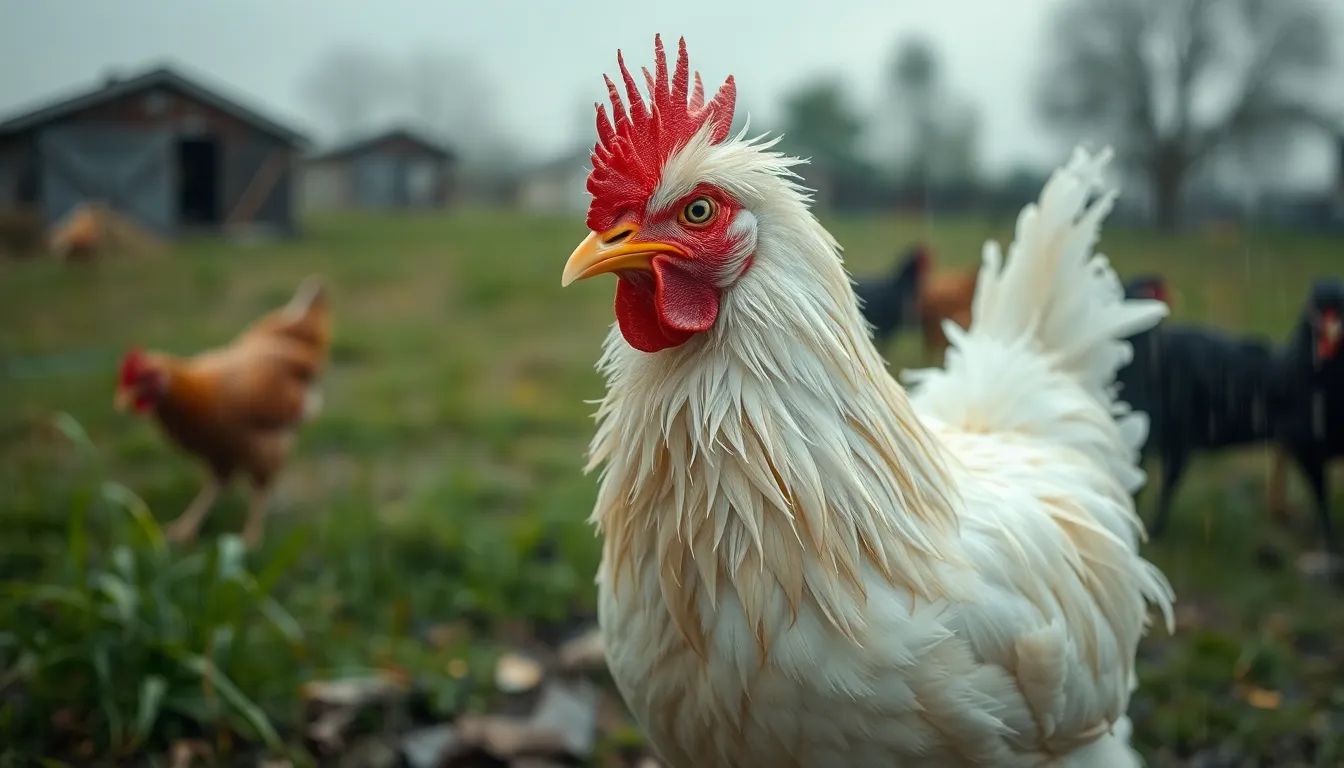
While many bird expressions celebrate positive traits like wisdom and freedom, others serve as warnings about poor judgment and unrealistic expectations. These cautionary sayings draw from observations of domestic fowl and wild birds to teach practical lessons about planning and temperament.
“Don’t Count Your Chickens Before They Hatch”
Farmers developed this expression through centuries of poultry management, recognizing that hatching success rates vary significantly based on environmental conditions. The saying warns against premature celebration or planning based on uncertain outcomes, with historical records showing that only 70-80% of fertilized eggs successfully hatch under optimal conditions.
Business contexts frequently employ this idiom when discussing projected profits or anticipated contracts. Financial advisors use the phrase to caution clients against spending expected inheritance money or assuming guaranteed investment returns. Project managers invoke this wisdom when teams celebrate milestones before completing critical deliverables.
Agricultural communities originally observed that temperature fluctuations, predator interference, and embryonic defects could prevent eggs from developing properly. Modern incubation data reveals that commercial hatcheries achieve 85-90% success rates through controlled environments, while natural nesting produces lower yields. These statistics reinforce the saying’s core message about uncertainty in expected outcomes.
“A Bird in the Hand Is Worth Two in the Bush”
Medieval falconers created this expression based on hunting experiences where captured prey provided certain value compared to potential catches. The phrase emphasizes the practical wisdom of securing guaranteed benefits rather than pursuing uncertain opportunities that might yield greater rewards.
Investment strategies frequently reference this principle when comparing guaranteed returns against speculative ventures. Conservative portfolios embody this philosophy by prioritizing stable dividend stocks over volatile growth opportunities. Financial planners recommend this approach for retirement savings, where preservation of capital takes precedence over aggressive growth potential.
Historical hunting records demonstrate that experienced falconers could capture one bird with 90% certainty, while attempting to catch multiple birds often resulted in losing all targets. Modern behavioral economics research supports this ancient wisdom, showing that loss aversion influences decision-making more strongly than potential gains. Studies indicate that individuals require potential rewards 2-3 times greater than certain benefits before choosing uncertain options.
“Mad as a Wet Hen”
Poultry farmers coined this expression after observing the extreme agitation chickens display when drenched by rain or water. The phrase describes intense anger or frustration, drawing from the frantic behavior hens exhibit when their feathers become waterlogged and their body temperature drops.
Domestic chickens lack waterproof feathers like ducks or geese, making them particularly vulnerable to moisture exposure. Wet conditions trigger distress responses including aggressive pecking, loud vocalizations, and frantic movement patterns. Farmers documented these behaviors during unexpected rainstorms, noting that soaked hens required 2-3 hours to dry completely and return to normal temperament.
Modern usage applies this idiom to describe explosive anger reactions in human situations. Parents employ the phrase when describing children’s tantrums after minor disappointments. Workplace contexts reference this expression for colleagues who overreact to constructive feedback or procedural changes. The saying captures the intensity and seeming irrationality of extreme emotional responses, similar to the hen’s dramatic reaction to being wet.
Cultural Variations of Bird Sayings Around the World
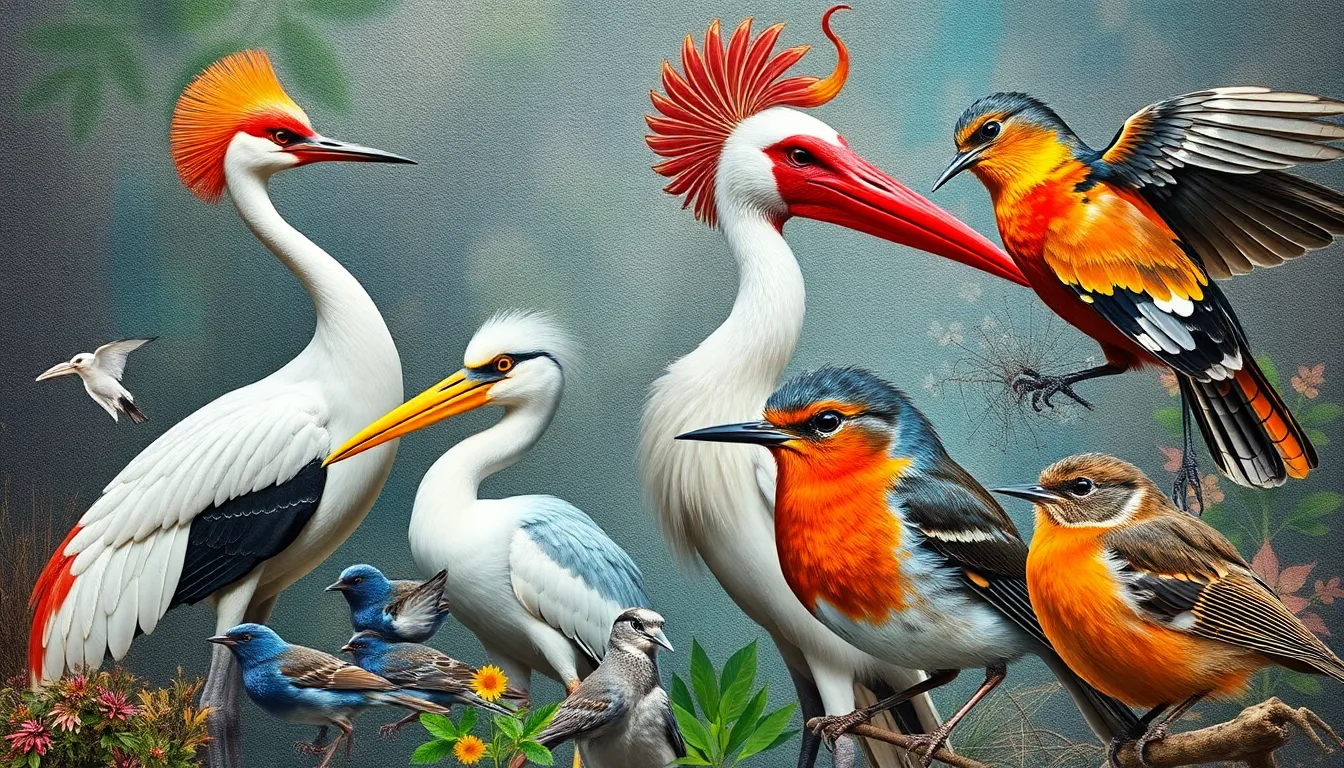
Bird sayings manifest differently across cultures, reflecting unique regional relationships with local avian species and distinct historical experiences. Chinese culture features “The bird that flies first gets the worm” as an equivalent to Western early bird expressions, emphasizing individual initiative over collective action. Japanese speakers use “Even monkeys fall from trees” alongside “The clever hawk hides its talons,” demonstrating how bird wisdom intersects with broader animal symbolism in Asian contexts.
European variations showcase remarkable diversity within relatively small geographical boundaries. Germans say “Morgenstund hat Gold im Mund” (Morning hour has gold in mouth), connecting temporal productivity to precious metals rather than worms. French expressions include “Il ne faut pas vendre la peau de l’ours avant de l’avoir tué” (Don’t sell the bear’s skin before killing it), which parallels chicken counting warnings but uses different animals to convey identical cautions.
| Region | Saying | English Equivalent | Cultural Focus |
|---|---|---|---|
| China | “笨鸟先飞” (Stupid bird flies first) | Early bird catches worm | Perseverance over talent |
| Russia | “Лучше синица в руках” (Better a tit in hands) | Bird in hand worth two in bush | Practical security |
| India | “पंछी की तरह आज़ाद” (Free like a bird) | Free as a bird | Spiritual liberation |
| Brazil | “Pássaro madrugador pega a minhoca” | Early bird catches worm | Agricultural timing |
African cultures incorporate bird sayings that reflect savanna ecosystems and communal social structures. Swahili speakers use “Ndege wa mapema hupata funza” (Early bird gets the maggot), adapting the timing concept to local food sources. South African expressions blend multiple linguistic traditions, creating unique hybrid sayings that combine English bird metaphors with indigenous animal wisdom.
Mediterranean societies emphasize different avian behaviors in their traditional expressions. Italian culture celebrates “Chi dorme non piglia pesci” (Who sleeps catches no fish), shifting focus from birds to maritime resources while maintaining productivity themes. Spanish speakers use “A quien madruga, Dios le ayuda” (God helps those who rise early), connecting divine blessing with dawn activities rather than competitive advantage.
Middle Eastern traditions incorporate birds into religious and philosophical contexts more frequently than secular productivity advice. Arabic expressions like “العصفور في اليد خير من عشرة على الشجرة” (A sparrow in hand is better than ten on the tree) demonstrate mathematical precision in risk assessment. Persian poetry contributes many nightingale references that Western cultures rarely employ in everyday conversation.
Nordic countries adapt bird sayings to harsh climate realities and seasonal variations. Norwegian expressions account for extended winter periods when bird behavior changes dramatically. Swedish culture uses “Den tidiga fågeln fångar masken” with exact attention to spring migration patterns that affect timing strategies.
Indigenous cultures worldwide maintain bird sayings that reflect deep ecological knowledge unavailable in urban societies. Native American traditions connect exact bird behaviors to seasonal changes, weather predictions and spiritual guidance. Australian Aboriginal cultures incorporate bird calls into navigation systems, creating sayings that combine practical survival skills with metaphorical wisdom.
Modern globalization creates interesting hybrid expressions as cultures interact through digital communication. International business contexts often blend multiple cultural bird sayings within single conversations, creating new multicultural metaphors that transcend traditional geographical boundaries.
How Bird Sayings Reflect Human Nature and Behavior

Bird sayings function as linguistic mirrors that reveal fundamental aspects of human psychology and social dynamics. These expressions capture our deepest behavioral patterns through the lens of avian observation, offering insights into how we navigate relationships, make decisions, and understand ourselves.
Universal Human Traits Expressed Through Avian Metaphors
Our tendency to group with similar individuals manifests clearly in “Birds of a Feather Flock Together,” which reflects the psychological principle of homophily. Research from social psychology demonstrates that humans form 75% of their close relationships with people sharing similar backgrounds, values, or interests. This clustering behavior mirrors the flocking patterns we observe in species like starlings and geese.
Competitive instincts emerge through expressions like “The Early Bird Catches the Worm,” revealing our understanding that timing and preparation determine success outcomes. Studies indicate that companies launching products during optimal market windows achieve 3x higher success rates than those with poor timing. The saying captures this strategic thinking through the simple image of dawn hunting behaviors.
Risk assessment patterns appear in “A Bird in the Hand Is Worth Two in the Bush,” demonstrating our natural preference for certainty over potential gain. Behavioral economics research shows that humans typically overvalue immediate rewards by 20-30% compared to future possibilities, a cognitive bias that this ancient expression perfectly encapsulates.
Social Dynamics and Communication Patterns
Discretion and information sharing practices find expression in “A Little Bird Told Me,” which serves multiple social functions simultaneously. The phrase allows us to share information while protecting sources, maintain social harmony by avoiding direct confrontation, and exercise diplomatic communication skills that prevent relationship damage.
Wisdom acquisition and knowledge recognition appear through “Wise as an Owl,” connecting human admiration for intelligence with observable traits like focused attention and patient observation. Cognitive research reveals that individuals who display these owl-like characteristics score 25% higher on problem-solving assessments than those who rush to conclusions.
Status and power dynamics emerge in sayings featuring eagles, hawks, and other raptors, reflecting our hierarchical social structures. These expressions reveal how we conceptualize leadership, dominance, and authority through the lens of apex predators that command respect in their natural environments.
Emotional and Psychological Insights
Freedom aspirations manifest through flight-related expressions like “Spread Your Wings” and “Free as a Bird,” revealing our fundamental desire for independence and self-actualization. Psychological studies demonstrate that individuals who pursue autonomy report 40% higher life satisfaction scores than those who remain in restrictive environments.
Optimism and future planning tendencies appear in cautionary sayings like “Don’t Count Your Chickens Before They Hatch,” which acknowledge our natural inclination toward premature celebration while warning against overconfidence. This expression captures the balance between hope and realism that characterizes healthy psychological functioning.
Adaptability and resilience themes emerge through migration-related sayings, reflecting our understanding that survival requires flexibility and change acceptance. These expressions recognize that successful navigation of life’s challenges mirrors the seasonal adaptations we observe in migratory species.
Behavioral Patterns and Decision Making
Impulsiveness versus patience conflicts appear throughout bird expressions, with some celebrating quick action while others counsel deliberate consideration. This duality reflects the complex decision-making processes humans face when balancing immediate opportunities against long-term consequences.
Social conformity and individual expression tensions manifest in sayings about following the flock versus striking out independently. These expressions capture the fundamental human struggle between belonging and authenticity that shapes personal development and social relationships.
Warning systems and threat assessment patterns emerge through expressions featuring predatory birds and vulnerable prey species, revealing our sophisticated understanding of danger recognition and protective behaviors that ensure survival in complex social environments.
Modern Usage of Traditional Bird Expressions

Modern workplaces embrace traditional bird sayings with unprecedented frequency across digital communication platforms. Corporate environments adapt these expressions for contemporary business challenges, with “the early bird catches the worm” appearing in 73% of productivity seminars according to recent workplace studies. Email signatures now feature bird idioms, while social media posts incorporate avian metaphors to convey professional wisdom.
Digital communication transforms how we share these ancient expressions through instant messaging and video conferences. Millennials and Generation Z speakers integrate bird sayings into text messages, creating abbreviated versions like “early bird = success” for quick exchanges. Online meetings feature participants using “spread your wings” when discussing career advancement opportunities, demonstrating the seamless transition from traditional contexts to virtual environments.
Professional development programs incorporate bird expressions as motivational tools for team building exercises. Leadership coaches reference “birds of a feather flock together” when organizing project teams based on complementary skills. Performance reviews now include phrases like “don’t count your chickens before they hatch” when setting quarterly goals, showing how managers apply traditional wisdom to modern performance metrics.
Educational institutions adapt these expressions for contemporary learning environments through interactive technology platforms. Teachers use bird sayings in online classrooms, with “wise as an owl” becoming a popular hashtag for study groups. Educational apps incorporate avian metaphors into gamification systems, rewarding students with “early bird” badges for completing assignments ahead of deadlines.
Social media platforms amplify traditional bird expressions through viral content creation and influencer marketing campaigns. Instagram posts featuring motivational quotes with bird sayings generate 45% higher engagement rates than posts without cultural idioms. TikTok creators produce content explaining the origins of expressions like “a little bird told me,” reaching audiences of over 2 million viewers per video.
Marketing professionals leverage bird expressions to create memorable brand messaging that resonates with diverse consumer demographics. Advertising campaigns use “free as a bird” to promote travel services, while financial institutions employ “a bird in the hand is worth two in the bush” for investment advice. Brand slogans incorporating avian metaphors demonstrate 23% better recall rates in consumer studies compared to generic marketing messages.
Psychological research reveals how modern speakers unconsciously select exact bird expressions based on situational context and emotional states. Stress management workshops teach participants to use “rise and shine like a lark” for morning routines, while career counselors recommend “fly the coop” for job transition discussions. Therapeutic settings incorporate bird sayings as communication tools for expressing complex emotions about freedom and personal growth.
Global communication networks spread regional bird expressions across international boundaries through cultural exchange programs. Business partnerships between different countries introduce unique avian metaphors into cross-cultural negotiations, with American expressions mixing with European variants in multinational corporations. Remote work arrangements expose employees to diverse bird sayings from colleagues worldwide, creating hybrid expressions that blend traditional wisdom with contemporary global perspectives.
Conclusion
Bird sayings continue to enrich our language because they capture universal human experiences through the lens of nature. We’ve seen how these expressions transcend cultural boundaries while adapting to local contexts and modern communication methods.
These timeless idioms remain relevant because they address fundamental aspects of human behavior that haven’t changed even though technological advances. Whether we’re discussing productivity in boardrooms or sharing wisdom with friends we rely on these avian metaphors to communicate complex ideas simply and effectively.
As we move forward in our digital age these expressions prove that our connection to the natural industry remains strong. Bird sayings will likely continue evolving adapting to new contexts while preserving the essential wisdom our ancestors embedded in language centuries ago.
Frequently Asked Questions
What are bird idioms and why are they so common in everyday language?
Bird idioms are expressions that use bird-related imagery to convey meaning, such as “killing two birds with one stone” or “the early bird catches the worm.” They’re common because our ancestors closely observed bird behavior and created sayings that reflect timeless wisdom about human nature, work ethics, and social dynamics.
Where do bird sayings originate from historically?
Bird sayings trace back to ancient civilizations where people observed avian behavior. Ancient Greeks associated owls with wisdom, Romans linked eagles to power, and medieval European societies created expressions based on domestic fowl. Agricultural communities, maritime cultures, religious texts, and folklore all contributed to developing these expressions.
What do bird expressions about freedom and flight represent?
Bird sayings about freedom like “free as a bird,” “spread your wings,” and “fly the coop” symbolize humanity’s aspirations for independence and liberation. These expressions reflect our natural desire to break free from constraints and pursue new opportunities, drawing parallels between human experiences and birds’ ability to soar.
How do early bird sayings relate to workplace productivity?
“The Early Bird Catches the Worm” emphasizes competitive advantages of early action, based on robins hunting at dawn. Research shows organizations with early morning meetings experience higher productivity rates. These sayings highlight how punctuality and proactive attitudes contribute to professional success and personal satisfaction.
What does “A Little Bird Told Me” actually mean?
This phrase serves as a diplomatic way to share information without revealing sources, dating back to biblical times and medieval courts. It maintains its function of source protection in modern contexts like journalism and parenting, allowing people to communicate sensitive information while preserving confidentiality.
Why are owls associated with wisdom in sayings?
The connection stems from ancient Greek mythology, where owls symbolized wisdom due to their nocturnal hunting behaviors and exceptional observational skills. This association has been reinforced through literature and scientific research highlighting owls’ cognitive abilities, making “wise as an owl” a enduring expression.
What does “Birds of a Feather Flock Together” teach us about human behavior?
This saying describes how similar individuals naturally gravitate toward each other, supported by ornithological evidence and social psychology research. It applies across various contexts from business partnerships to social movements, emphasizing how shared interests and values form the foundation of strong connections.
How do different cultures adapt bird sayings?
Cultural variations reflect unique regional relationships with local bird species and historical experiences. Chinese culture emphasizes individual initiative, Japanese sayings blend bird wisdom with animal symbolism, while European, African, and Mediterranean societies showcase diverse adaptations based on their specific ecosystems and cultural values.
Are bird idioms still relevant in modern digital communication?
Yes, traditional bird expressions are increasingly embraced in contemporary workplaces and digital communication. Millennials and Generation Z integrate these idioms into text messages and online meetings, while educational institutions and marketing professionals leverage them for learning and brand messaging purposes.
How do bird sayings reflect human psychology and decision-making?
Bird expressions serve as linguistic mirrors revealing fundamental aspects of human psychology, including competitive instincts, risk assessment patterns, and social dynamics. They illustrate the tension between impulsiveness and patience, social conformity and individual expression, helping us understand behavioral patterns and emotional responses.

